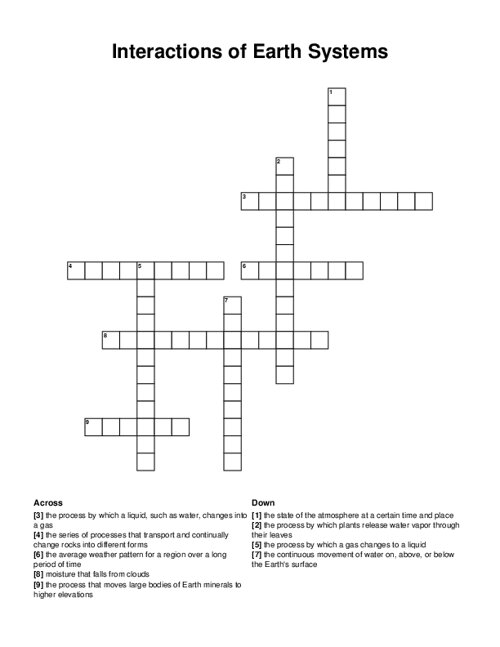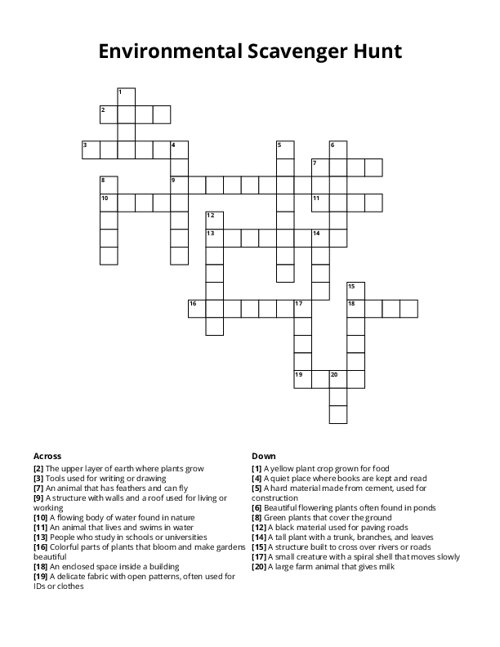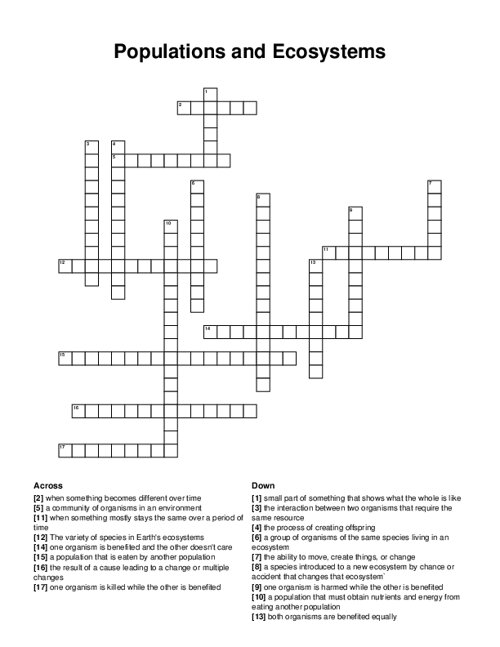Weather & Storms Crossword Puzzle
Download and print this Weather & Storms crossword puzzle.
Related puzzles:
Browse all Ecology / Climate Puzzles
QUESTIONS LIST:
- air pressure : the force exerted by the weight of air molecules in the atmosphere on the earth's surface.
- low pressure : an area where warm, moist air is rising, leading to cooling, condensation, and typically wet weather (low and wet).
- high pressure : an area where cool, dry air is sinking, preventing condensation and leading to typically dry, clear weather (high and dry).
- gradient : the difference in pressure between a high-pressure area and a low-pressure area, which causes air to move (wind).
- air mass : a large body of air (thousands of kilometres wide) that is relatively uniform in temperature and moisture throughout.
- front : the boundary zone where two different air masses (typically a warm air mass and a cold air mass) meet and collide.
- cold front : the boundary where a faster-moving cold air mass replaces a warm air mass, causing heavy, short-lived rainfall and potential storms.
- warm front : the boundary where a warm air mass replaces a cold air mass, causing prolonged, gentle rainfall and a gradual temperature increase.
- jet stream : a fast-flowing, narrow band of wind found high in the atmosphere, which steers weather systems like low-pressure storms.
- blocking : a weakening of the jet stream (due to global warming) that causes weather systems to remain stationary over an area for extended periods, increasing the risk of extreme weather.
- coriolis effect : the earth’s rotation that causes moving air and water to be deflected, giving tropical storms their characteristic spin.
- eye : the calm, clear, central area of a tropical storm, where cool, dry air is sinking.
- mitigation : actions taken to reduce the fundamental cause of a hazard or reduce its severity.
- adaptation : actions taken to adjust to the impacts of a hazard to reduce vulnerability and disruption (e.g, insurance, evacuation, sea walls).
- storm surge : a rise in sea level above the predicted tide, caused by the strong winds and low pressure of a tropical storm pushing water towards the coast.





